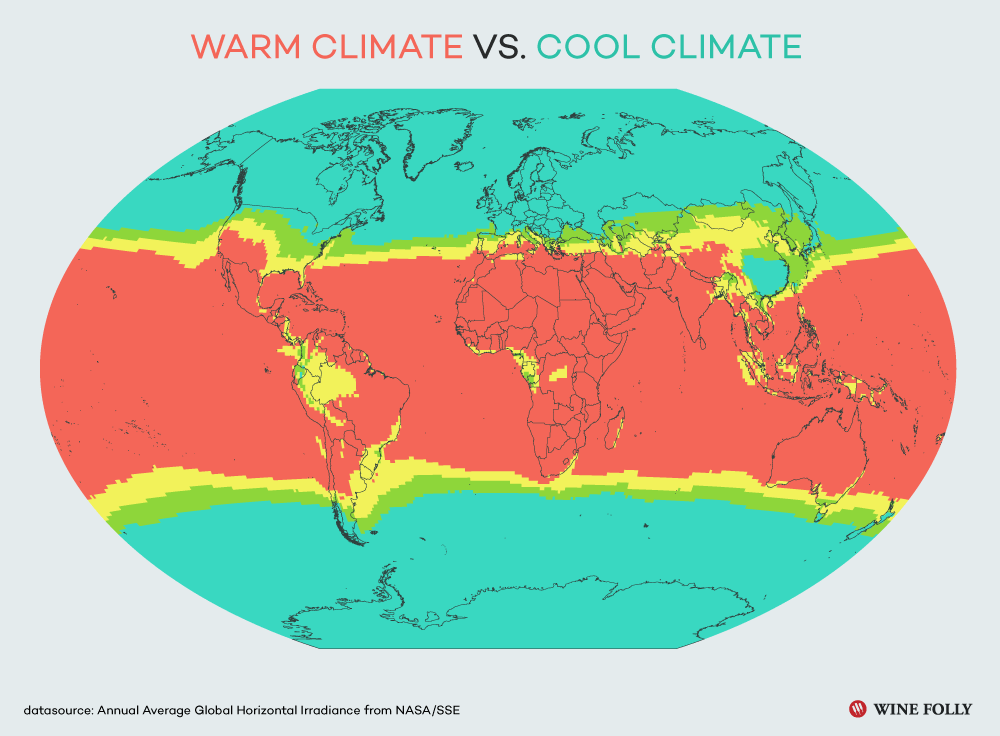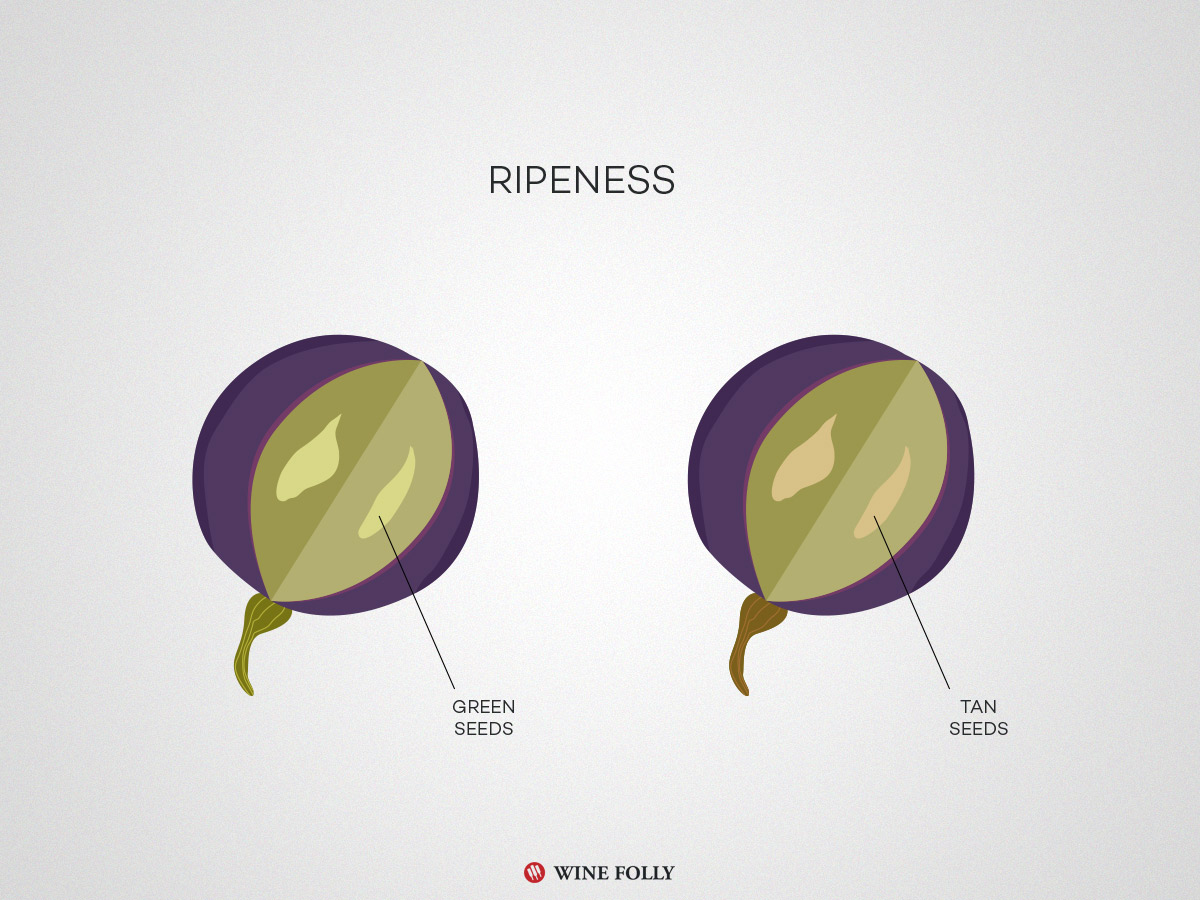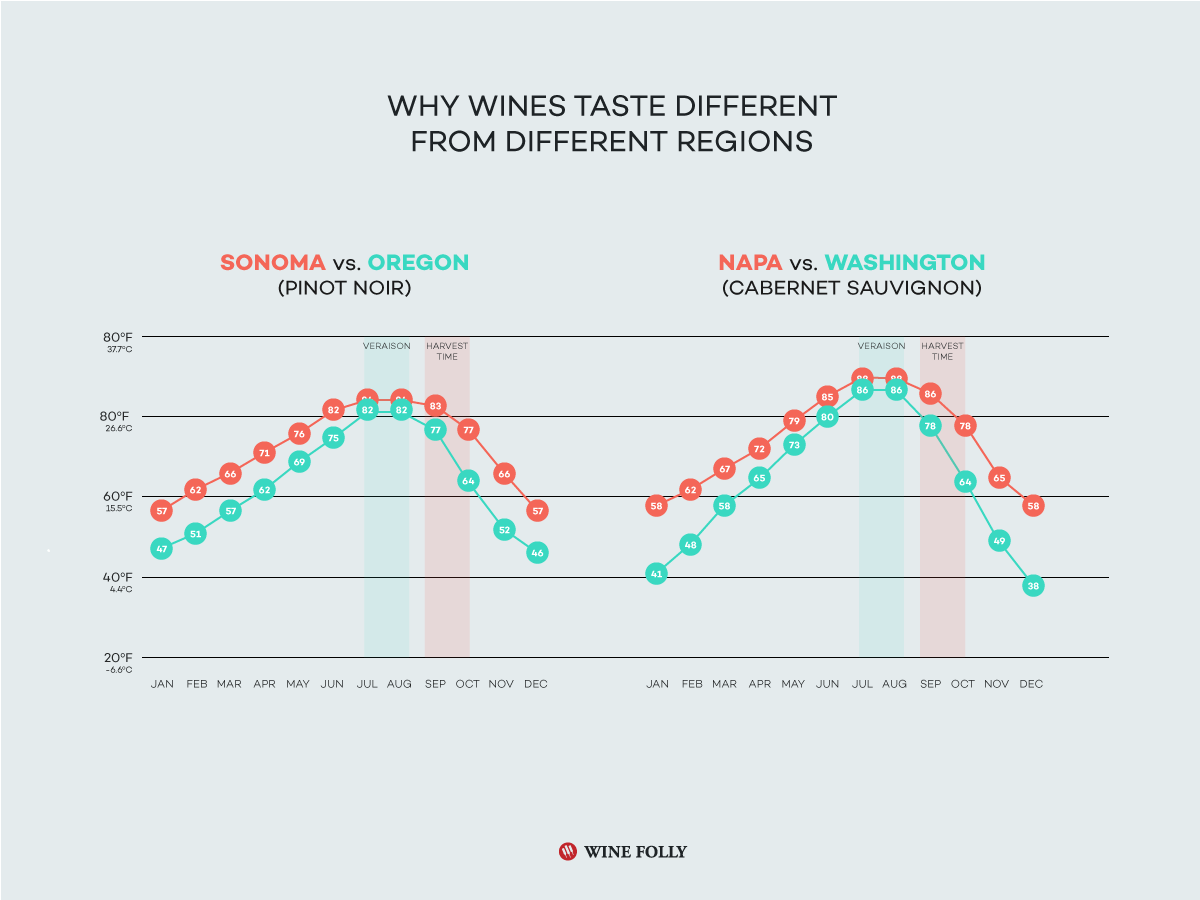Ever notice how every wine description seems to have an abundance of fruit flavors listed? Yet, when you try some wine, they completely lack what you’re expecting? This little annoyance happens from time to time. It’s actually part of the reason why learning about wine is so tricky.
Learn 2 big tips on why you should care where you wine comes from. Guess what, it has nothing to do with quality and everything to do with the weather.
- Ripeness
- Warm Climate Wine vs Cool Climate Wine
HOW RIPE THE GRAPES ARE
If you’ve ever purchased a basket of cherry tomatoes, and some taste sweeter than others, then you know all about ripeness. When it comes to wine, it’s useful to know that wineries pick their grapes at different times. Less ripe grapes tend to make resulting wines taste more tart, particularly on the finish. Grapes that are more ripe tend to make the wines taste sweeter. If you love wine with an almost sweet tasting finish, a key indicator is to look for words like ‘ripe’ or ‘sweet tannins’. If you like tart fruit flavors then you’ll want to look for wines that are described as ‘elegant’ or ‘balanced’.
Why would a winery want to pick early?
The main reason for picking earlier is because the winery is trying to balance getting the grape as sweet as possible without losing all the acidity. This is probably where the description ‘balance’ originated. While there are several additives wineries add to a wine after the fact, like acid, the ultimate goal is to not have to add anything to make wine. Wineries who time their picking to preserve acidity will vary from year to year but this method is popular because it’s a more natural way to make wine.
WHERE THE GRAPES GROW

Wine grapes grow from Mexico to British Columbia. The wide range in climates that grapes can grow results in different tasting wines. For this reason, wine regions are grouped into two major climate types: Warm Climate vs. Cool Climate. If you understand the general characteristics of both climate types, you can explore new wines from the climate type you prefer.
Warm Climate vs. Cool Climate Wine
Warm climate regions tend to have more consistent temperatures throughout the season. The slow drop off from summer into fall gives grapes ample opportunity to become fully ripe but the negative is that more natural acidity in the grapes is lost. You can generally assume that warm climates produce grapes with more ripe fruit flavors and less acidity.
Examples of Warm Climate Wine Regions
- California
- Argentina
- Australia
- Southern Italy
- Greek Islands
- Central & Southern Spain
- Central & Southern Portugal
- Most of South Africa
- Southern France
- Southern Italy
Cool climate regions definitely get just as hot as warm climates in the peak of the season. However, it is the fact that the temperatures drop off so quickly towards harvest that make the wines taste different. Lower temperatures preserve the acidity but they also make it difficult for grapes to ripen. You can generally assume that cool climate wine regions tend to produce tart fruit flavors and have more acidity.
Of course, the vintage plays a major role in the outcome. You can have a cool vintage create incredibly ripe tasting wines and vice-versa. This is why vintage matters so much, particularly if you tend to prefer cool climate wines.
Examples of Cool Climate Wine Regions
- Northern France
- Oregon
- Washington State (see chart)
- New York
- Chile
- Hungary
- New Zealand
- Northern Italy
- South Africa
- Austria
- Germany
- Northern Greece & Macedonia
The lists of climate regions are a little generalized. It’s possible to have a ‘micro-climate’ that’s within a larger climate type. A great example of a microclimate is San Francisco. Technically, the city should get really hot in the summer, because all the surrounding areas do. However, because San Francisco has a marine fog layer in the mornings, it stays a lot cooler.
What if I Don’t Know What I Like?
Buy a single variety wine from both a warm climate and a cool climate (hopefully from the same vintage) and taste them side by side. You can read about a great example of this if you’d like to compare French Malbec to Argentine Malbec.



